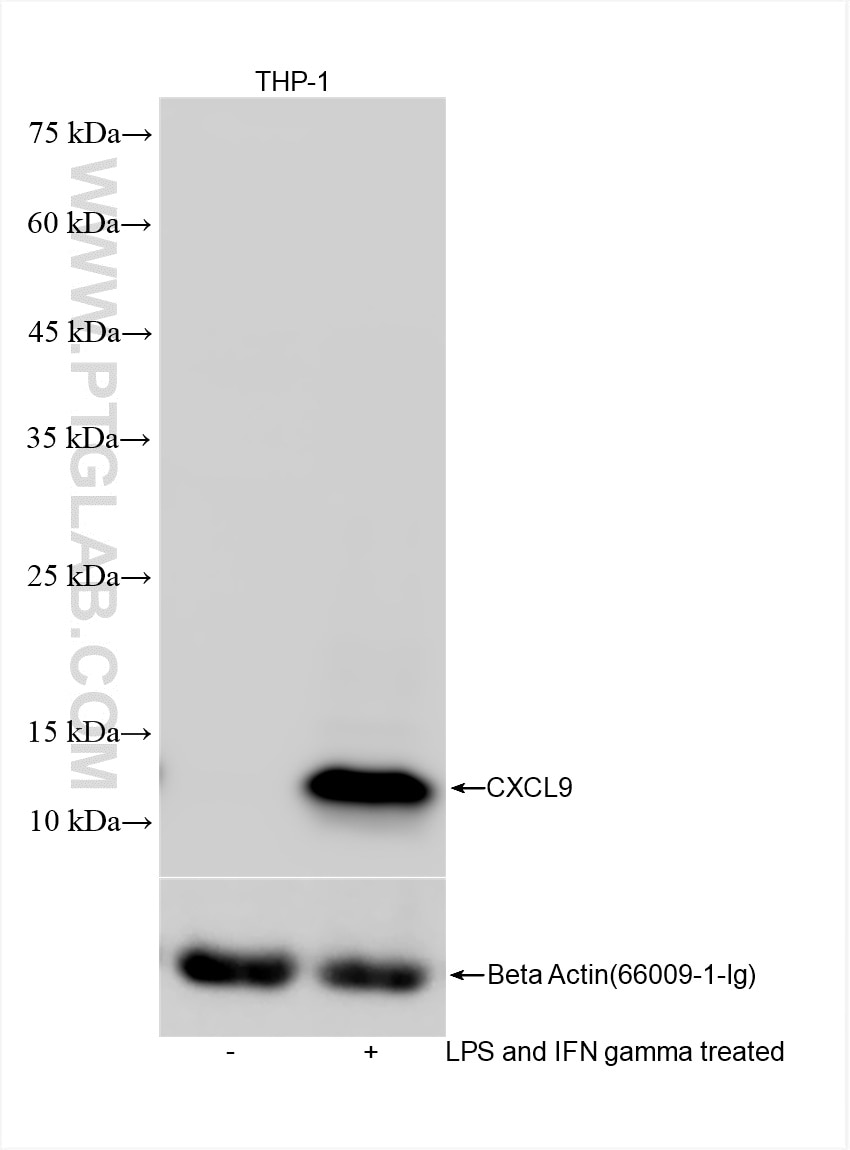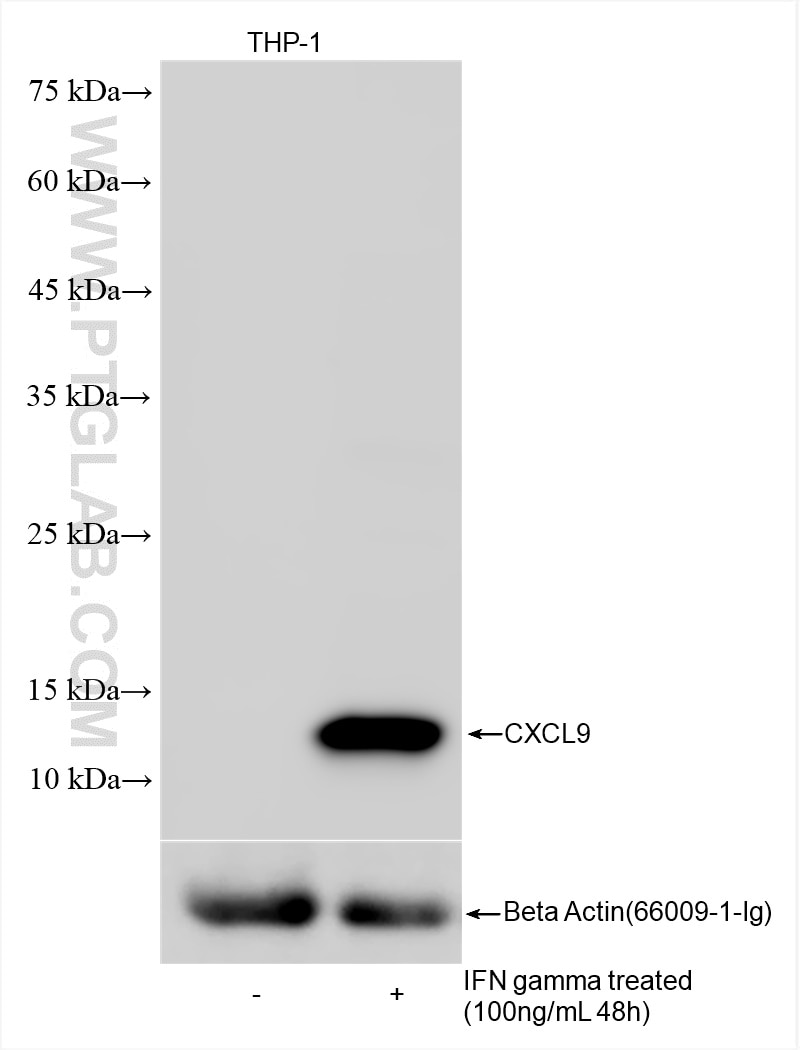Tested Applications
| Positive WB detected in | LPS and IFN gamma treated THP-1 cells, IFN gamma treated THP-1 cells |
Recommended dilution
| Application | Dilution |
|---|---|
| Western Blot (WB) | WB : 1:5000-1:50000 |
| It is recommended that this reagent should be titrated in each testing system to obtain optimal results. | |
| Sample-dependent, Check data in validation data gallery. | |
Product Information
84427-4-RR targets CXCL9/MIG in WB, ELISA applications and shows reactivity with human samples.
| Tested Reactivity | human |
| Host / Isotype | Rabbit / IgG |
| Class | Recombinant |
| Type | Antibody |
| Immunogen |
CatNo: Ag17932 Product name: Recombinant human CXCL9 protein Source: e coli.-derived, PGEX-4T Tag: GST Domain: 23-125 aa of BC095396 Sequence: TPVVRKGRCSCISTNQGTIHLQSLKDLKQFAPSPSCEKIEIIATLKNGVQTCLNPDSADVKELIKKWEKQVSQKKKQKNGKKHQKKKVLKVRKSQRSRQKKTT Predict reactive species |
| Full Name | chemokine (C-X-C motif) ligand 9 |
| Calculated Molecular Weight | 14 kDa |
| Observed Molecular Weight | 14 kDa |
| GenBank Accession Number | BC095396 |
| Gene Symbol | CXCL9 |
| Gene ID (NCBI) | 4283 |
| RRID | AB_3671954 |
| Conjugate | Unconjugated |
| Form | Liquid |
| Purification Method | Protein A purfication |
| UNIPROT ID | Q07325 |
| Storage Buffer | PBS with 0.02% sodium azide and 50% glycerol, pH 7.3. |
| Storage Conditions | Store at -20°C. Stable for one year after shipment. Aliquoting is unnecessary for -20oC storage. 20ul sizes contain 0.1% BSA. |
Background Information
CXCL9 is a small cytokine known as MIG. CXCL9 is a T-cell chemoattractant, which is induced by IFN-γ. It is closely related to two other CXC chemokines called CXCL10 and CXCL11, whose genes are located near the gene for CXCL9 on human chromosome 4. A high level of CXCL9 revealed in peripheral liquids, can be considered as a marker of host immune response, especially of that involving Th1 cells.
Protocols
| Product Specific Protocols | |
|---|---|
| WB protocol for CXCL9/MIG antibody 84427-4-RR | Download protocol |
| Standard Protocols | |
|---|---|
| Click here to view our Standard Protocols |






